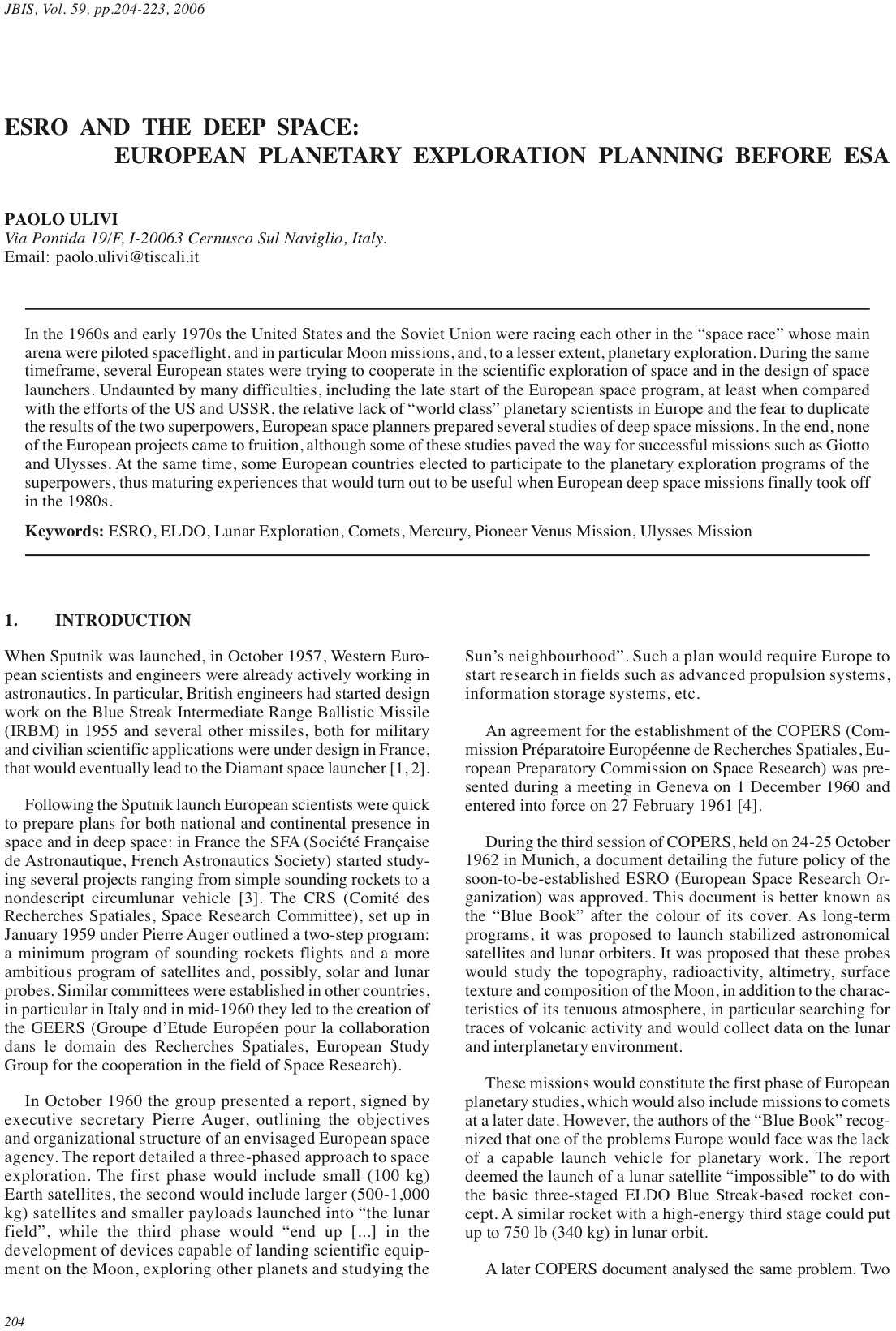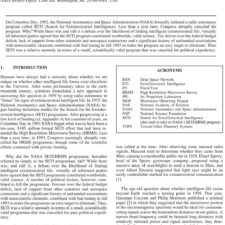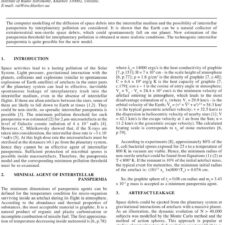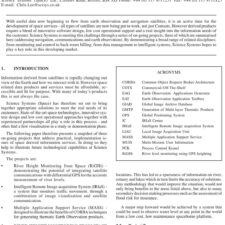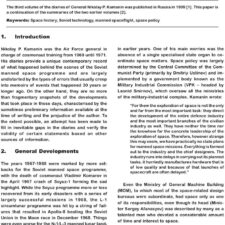ESRO and the Deep Space – European Planetary Exploration Planning Before ESA
£5.00
P. Ulivi (2006), JBIS, 59, 204-223
Refcode: 2006.59.204
Keywords: ESRO, ELDO, Lunar Exploration, Comets, Mercury, Pioneer Venus Mission, Ulysses Mission
Abstract:
In the 1960s and early 1970s the United States and the Soviet Union were racing each other in the “space race” whose main arena were piloted spaceflight, and in particular Moon missions, and, to a lesser extent, planetary exploration. During the same timeframe, several European states were trying to cooperate in the scientific exploration of space and in the design of space launchers. Undaunted by many difficulties, including the late start of the European space program, at least when compared with the efforts of the US and USSR, the relative lack of “world class” planetary scientists in Europe and the fear to duplicate the results of the two superpowers, European space planners prepared several studies of deep space missions. In the end, none of the European projects came to fruition, although some of these studies paved the way for successful missions such as Giotto and Ulysses. At the same time, some European countries elected to participate to the planetary exploration programs of the superpowers, thus maturing experiences that would turn out to be useful when European deep space missions finally took off in the 1980s.

